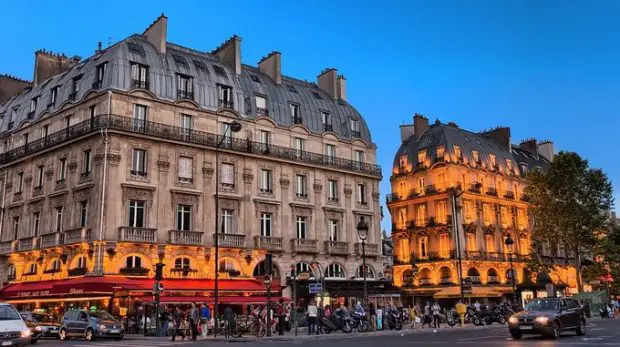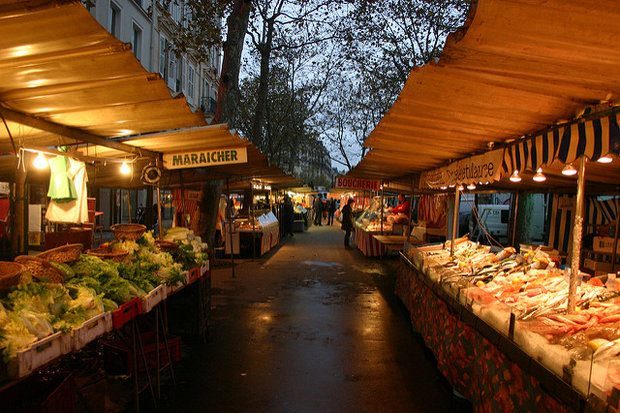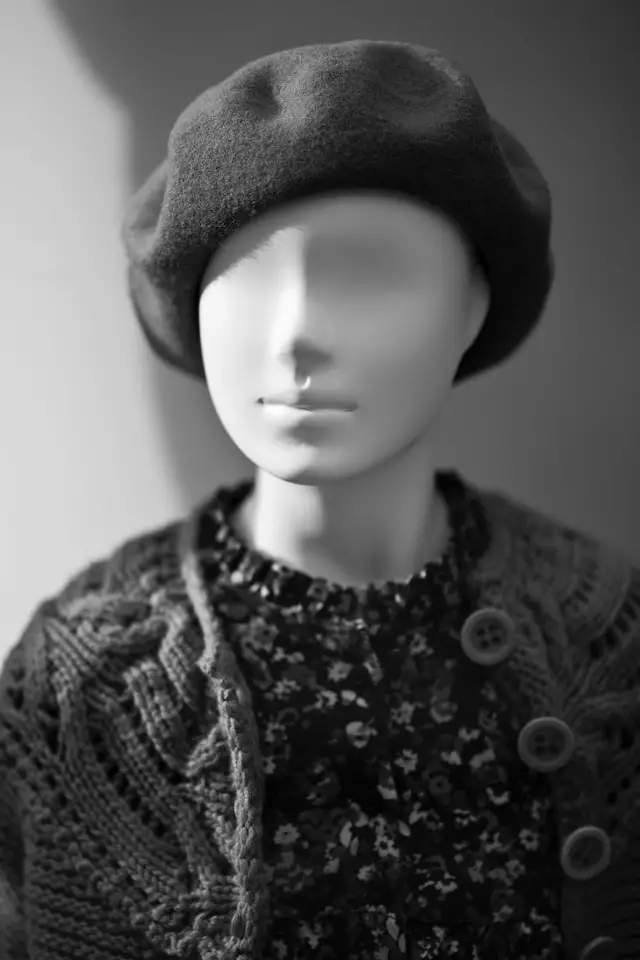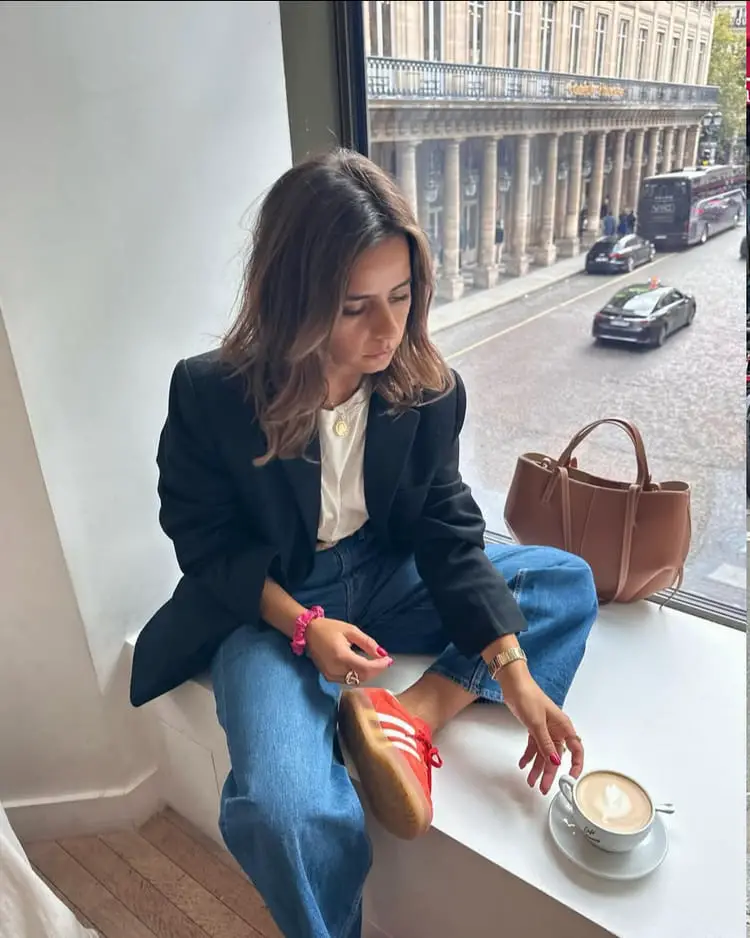Big department stores (called “Grands Magasins” in French) are a must-see in Paris. Galeries Lafayette alone gets half its visitors from abroad. These stores made shopping fun and changed how people shop. Today, they have locations all over France—and even in other countries.
Les Galeries Lafayette
40, Boulevard Haussmann 75009 Paris
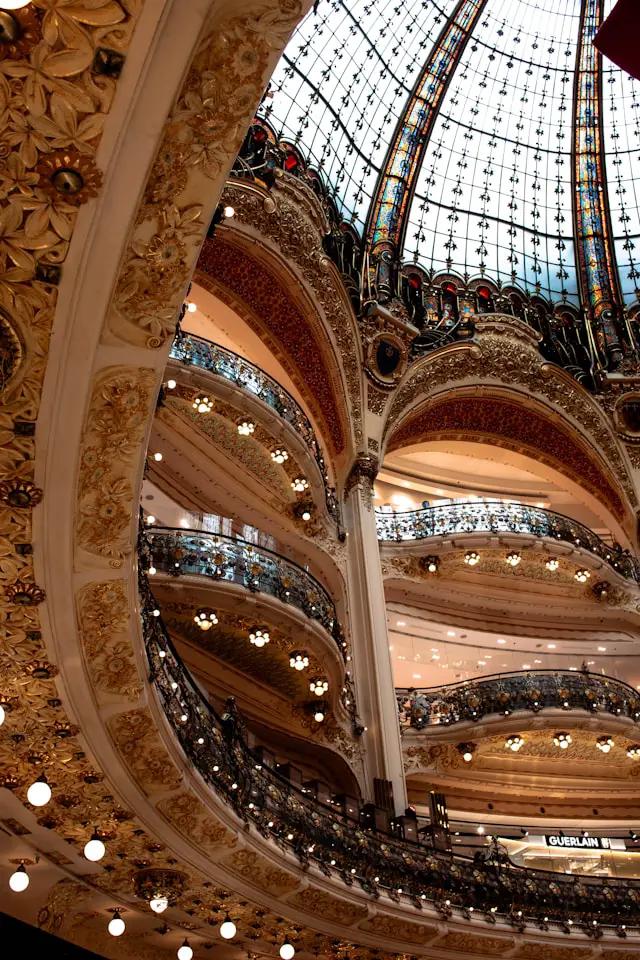
Surface area: 70,000 m2
Number of brands: More than 2,000 brands from all over the world
Most famous brands: Calvin Klein, Chanel, Dior, Louis Vuitton, Galeries Lafayette, and more.
Located on Boulevard Haussmann, this department store is undoubtedly the most famous of all. It is the largest department store in Europe and the second largest in the world after Macy’s Herald Square, and has more than 37 million visitors a year.
The store does not stop at shops; it also organizes important cultural events.
For example, it is the creator of the Fashion Festival.
The cupola building has seven floors, covering 45,000 m2. There you will find: fashion (with, of course, the famous Galerie Lafayette brand), beauty, accessories, watches and jewelry, shoes, children’s clothes and toys, and home goods.
There is also a catering area as well as a roof terrace!
My opinion:
For the history and architecture alone (incredible cupola and traditional Haussmannian building), this department store is worth a visit. The view from the roof is also breathtaking! It is also the ideal place for shopping as there is everything, spread over a wide price range.
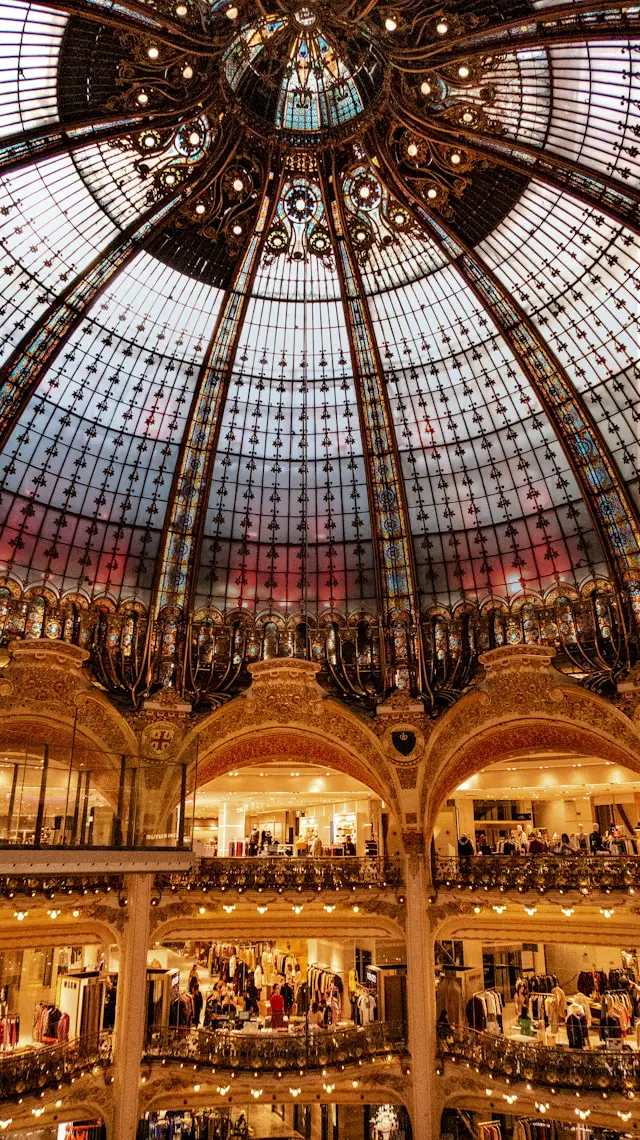
Le Printemps Haussmann
64 Boulevard Haussmann, 75009 Paris
Voir cette publication sur Instagram
Surface area: 45,000 m2
Number of brands: 3,500
Most famous brands: Oakley, Paul Smith, Polo Ralph Lauren, Prada, Ray Ban, Versace, and more.
Le Printemps has been located on Boulevard Haussmann since 1865.
The store built its success on black silk and stands out for the invention of sales.
In addition, to build customer loyalty, Le Printemps offers a bouquet of violets every March 21st on the first day of spring.
The architecture of the building is Art Nouveau and it has a very beautiful dome.
It has an area of 45,500 m2, divided into 3 buildings and 27 floors, where you will find everything.
There is also a terrace on the ninth floor where it is possible to have a drink and observe the whole city of Paris.
My opinion:
Another very nice place. It is really worth the detour, if only for the terrace which allows you to have an almost panoramic view of Paris. Printemps Haussman is also popular for its animated window displays during the Christmas holidays, designed by renowned decorators and fashion designers. It’s something to see.
Voir cette publication sur Instagram
Le Bazar de l’Hôtel de Ville (BHV)
52 Rue de Rivoli, 75004 Paris
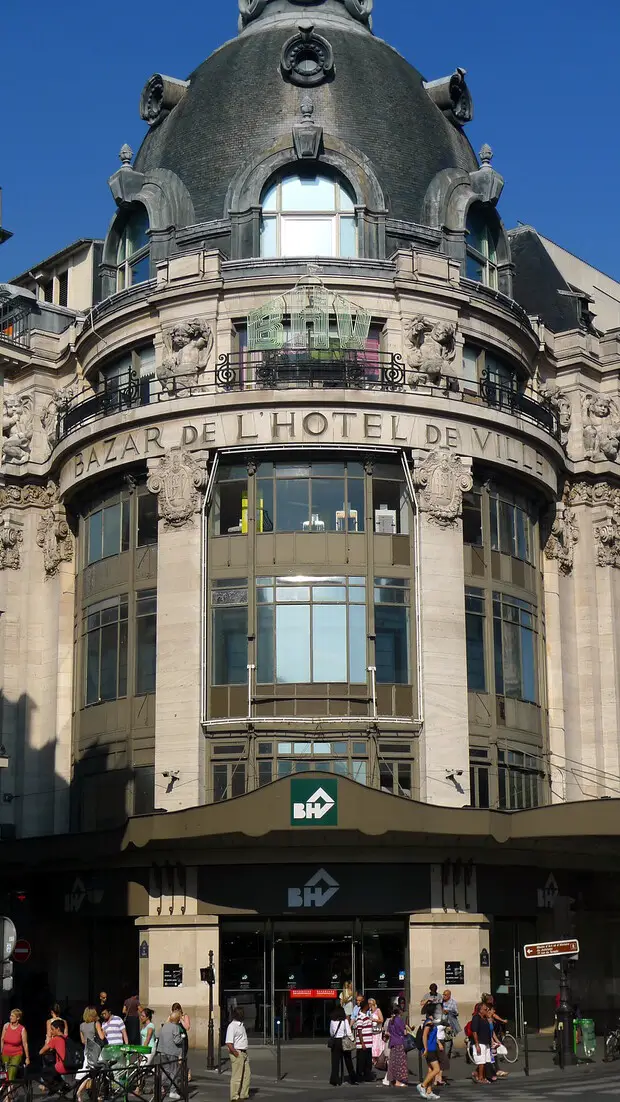
Surface area: 45,000 m2
Number of brands: 900
Most famous brands: Fendi, Moncler, Givenchy, Gucci and Valentino, and more.
BHV began to sell fashion items at the beginning of the 20th century. It was also at this time that the Bazar de l’Hôtel de Ville became a renowned department store throughout the capital and in metropolitan France.
In 1912, the store was remodeled in the Art Nouveau style. It has a rotunda, like the Petit Palais and Grand Palais.
Since 2020, the store on Rue de Rivoli has been organized as follows:
- Basement: DIY section.
- Ground floor: Home decor, jewelry, beauty, perfumery, and pop-up shops.
- First floor: Women’s fashion and footwear.
- Second floor: Luggage, stationery, culture, and creative hobbies.
- Third floor: Culinary arts and two restaurants—Marlette and Les Artisans de la Truffe.
- Fourth floor: Home decor and lighting.
- Fifth floor: Toys, children’s fashion, lingerie, and restaurants, including “La Table Cachée” by chef Michel Roth.
- Sixth (and top) floor: Bathroom essentials, bedding, and linens. Plus, Terraza Mikuna, a South American restaurant with a rooftop terrace offering stunning views of the Hôtel de Ville.
In rue de la Verrerie, you will also find a BHV L’Homme dedicated to men’s fashion, an animal shop called “La Niche” and a dedicated e-bike store named “Mobicity.”
Website (in French)
My opinion:
The architecture of this place is really beautiful and worth seeing. Prices span a wide range, so the place is accessible to everyone. There is absolutely everything, and even if you don’t buy anything, walking around is really pleasant.
Voir cette publication sur Instagram
Le Bon Marché
- 24 rue de Sèvres, 75007 Paris
- 26-38 rue de Sèvres, 75007 Paris
Voir cette publication sur Instagram
Surface area: 30,000 m2
Number of brands: 1,180
Most famous brands: Cheval des Andes, Joseph Phelps, Krug, Mercier, Moët & Chandon, Kenzo, Loewe Perfumes, Hublot, Tiffany & Co, Jardin d’Acclimatation, Les Echos, etc.
Le Bon Marché is a benchmark in the world of department stores. A true pioneer. It is one of the emblems of French luxury and has shaped the image of the famous independent and fashionable Parisian who continues to fascinate the whole world.
Au Bonheur des Dames (1883) by Émile Zola was inspired by this place.
The current building was built in 1869 and has been extended a multitude of times.
The first store, at 24 rue de Sèvres opposite Square Boucicaut, has 6 floors and 3 basement levels. The second store, located at 26-38 rue de Sèvres, has 6 floors and 2 basement levels.
There is also an annex at 16 rue de Babylone.
All are populated by shops and offices. Suffice to say that you will not fail to find what you came looking for there!
My opinion:
This store is the modern emblem of luxury. It is huge, quiet, and very beautiful, but it is also very expensive. The architecture, the history of the place, and the calm of the place are reason enough to visit, but if you want to go shopping, you have to have the means!
Voir cette publication sur Instagram
La Samaritaine
9 R. de la Monnaie, 75001 Paris
Voir cette publication sur Instagram
Surface area: 50,000 m2
Number of brands: 600
Most famous brands: Balmain, Alexander McQueen, Stone Island, Thom Browne, Moncler, Louis Vuitton, Christian Louboutin, Gucci, Veja, and more.
This department store is located in the 1st arrondissement of Paris near the Pont Neuf.
It was completely renovated in 2021.
More than 600 iconic brands are grouped together in an area of 50,000 m2. The store also contains the largest beauty area in Europe.
There are also plenty of dining areas from early morning until late evening.
Terminals to charge your electronic devices are also available free of charge.
My opinion:
Since the renovation, the place is really beautiful, the interior is superb and everything is presented in a very elegant way. The building itself is unique.
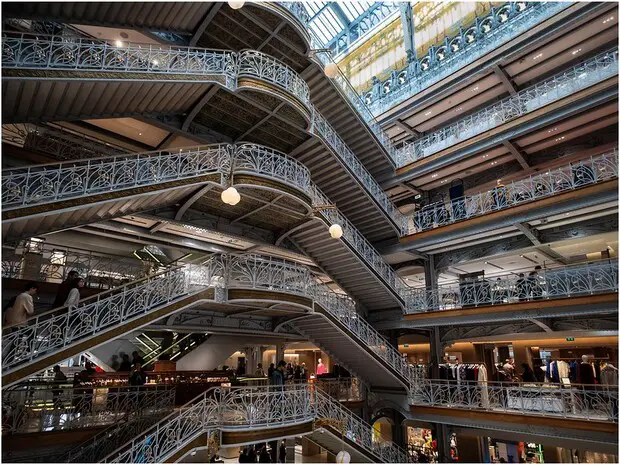
I aim to share my tips and recommendations for the beautiful country of France. My goal is to help you plan your next adventure, whether it’s a weekend getaway or a once-in-a-lifetime trip. From finding the best hotels and restaurants, to discovering unique activities and sights, I’ve got you covered!

